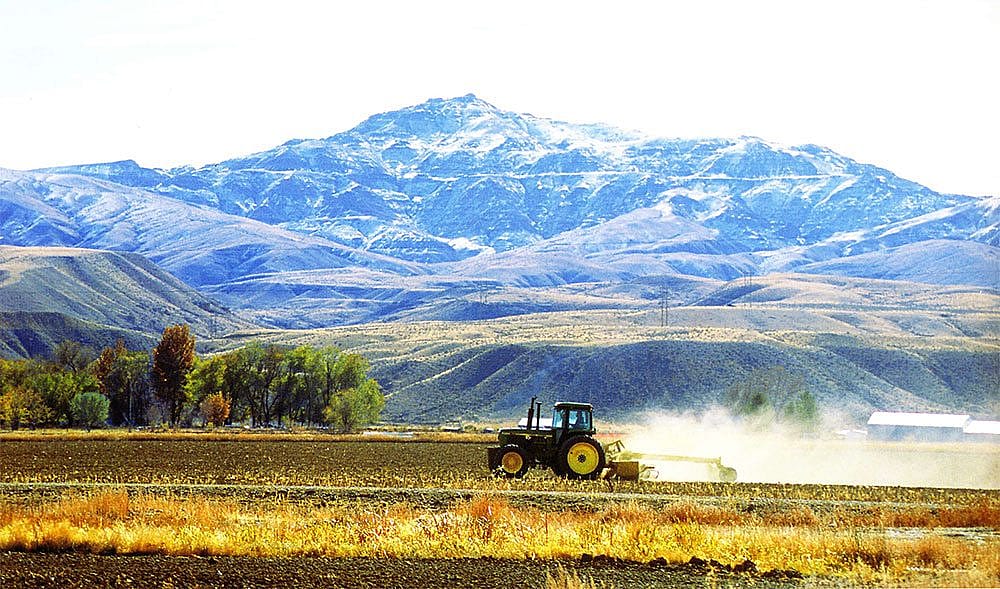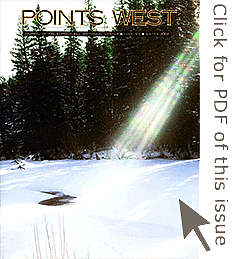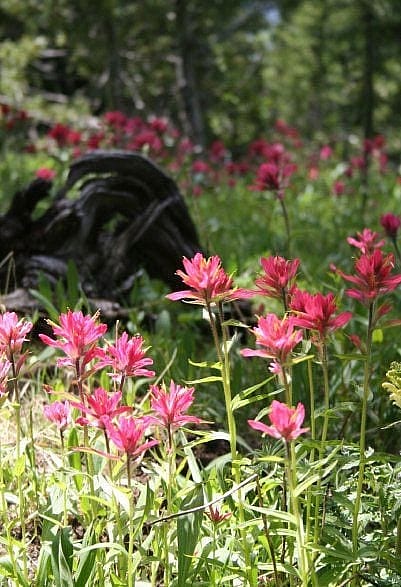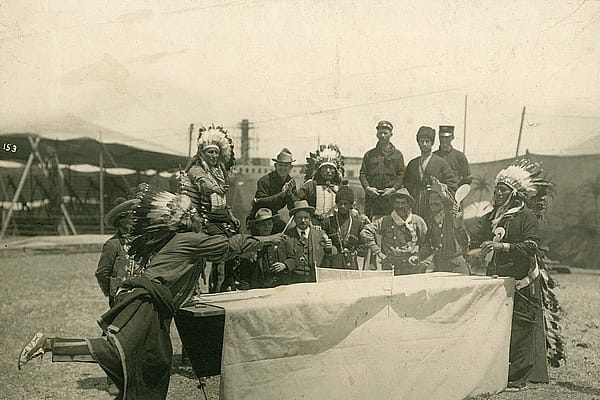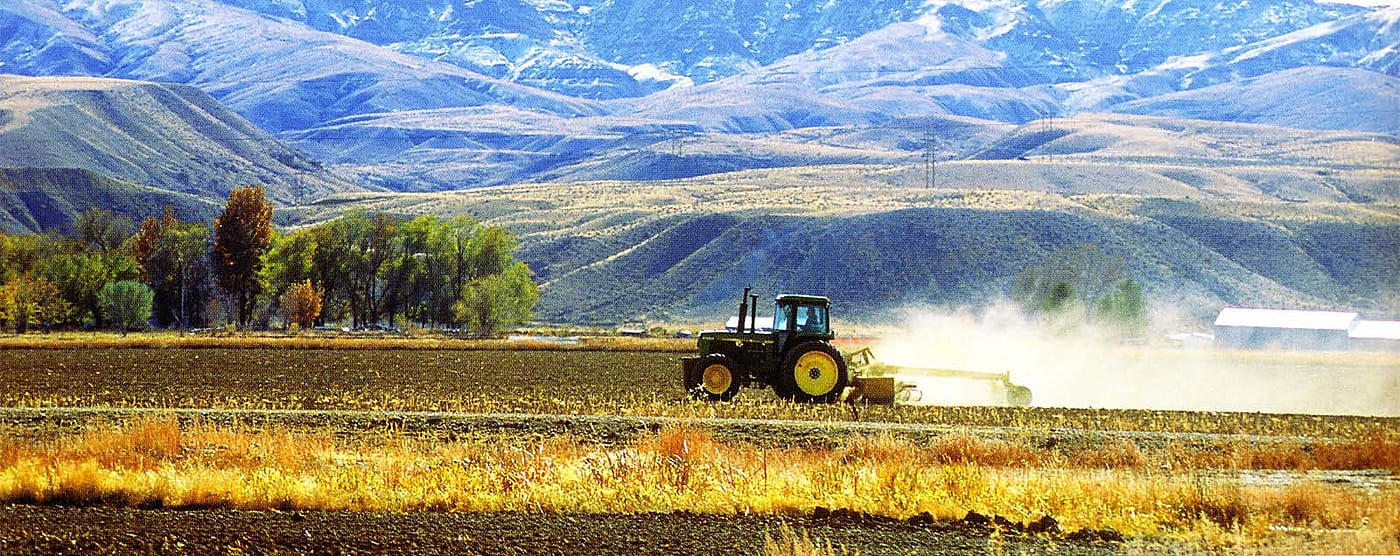
Ode to Spring – Points West Online
Originally published in Points West magazine in Winter 2002
Ode to Spring
By Valarie Hamm
Former Intern, Draper Museum of Natural History
I once watched a single golden leaf drift silently to the ground in eastern Washington. “Today,” I wrote in my journal, “I saw autumn begin.”
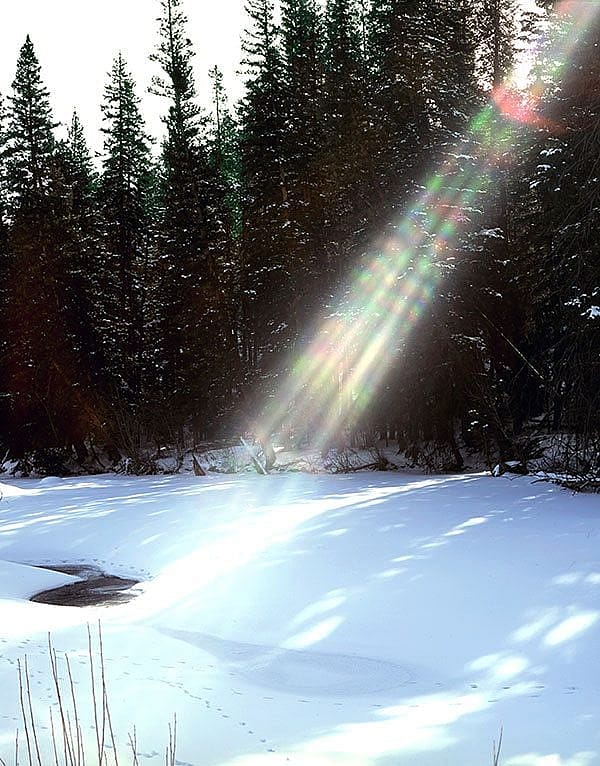
More than a hundred years earlier a Wyoming rancher had also noted the arrival of a season: spring. [Saw] the first meadowlark, wrote Otto Franc in March of 1888. The river which commenced to break up on the 14th but froze up again, breaks up today in good earnest.
The song of a bird, melting ice…the signs of spring in the Greater Yellowstone are timeless. What Otto Franc observed in 1888 is still noted today by farmers like Beryl Churchill.
“Spring arrives when the red-winged blackbird arrives,” Beryl tells me one morning. Beryl’s family has farmed land surrounding Powell, Wyoming, since 1909, when her husband’s grandparent’s homesteaded. “My husband and I walk every day, and every year we record in the diary when we see the red-winged blackbird. Right after the blackbird, we hear the meadowlark. Then we know that pretty soon we’ll be able to get into the field.”
Jack Turnell, a cattle rancher who manages the same Pitchfork Ranch that Otto Franc once owned, senses spring in his bones. “I can look out my window and see it happening. I just know it’s there,” says Jack. “I don’t know how to explain spring except that your bones don’t hurt so bad. Spring hits and your bones thaw out and even your body has new life, not just the things around you.”
When this writer lived in Seattle, spring manifested itself in the incessantly dripping gray skies and a monotonous seasonal wardrobe of rain boots and slickers. If I’d had my way, we would have skipped spring altogether and moved right into summer. But in the Greater Yellowstone region, spring is arguably the most vibrant of seasons, an outgoing optimist full of life and activity who inspires ice to crack, animals to birth, roots to grow and people to start fresh after a long winter.
“I think people’s dispositions get better. It’s not the cold and harshness of winter,” says Jack Turnell. “They see new life, and they have a new outlook.”
For ranchers and farmers like Jack and Beryl, spring kicks off one of the busiest times of the year. “We don’t turn the tractors off once they’re on. We work in shifts from seven to seven in the spring,” says Beryl Churchill.
In spring, a young man’s fancy supposedly turns to love, but Elinore Pruitt Stewart wrote in 1912, “In Wyoming, ranchers can scarcely take time to be married in the springtime.” While spring isn’t devoid of marriage ceremonies today, the routine of springtime ranch life hasn’t changed much since homesteaders first settled in the region.
“You get up in the morning and plan the day. It may be riding, it may be irrigating. It could be plumbing, electrical work, carpentry,” Jack Turnell explains. “We always have something to do. Digging ditches, fixing roads. There’s just never a dull moment.”
Again Franc wrote one spring…We start work on the big ditch again but have to give it up as the ground in some places is frozen; we haul manure, gather up cow chips, clean sheds…The roof of the bunkhouse leaks badly and we have to spread lay sheets over it; storms until noon after which it lets up a little…we clean horse corral and shed.
It was spring when this writer phoned the manager of a western Wyoming ranch to say, “I’ll take the job.” I’d never seen Wyoming and its sagebrush steppes, never visited the first national park—Yellowstone—and never ridden a horse bareback into the hills. For four years, my life had revolved around college exams, professors’ office hours, clocks and school holidays. Seasons were secondary. Fall arrived when classes began. Winter arrived with Christmas vacation. Spring started because the college calendar said Spring Break.
In Wyoming’s spring, I found myself chasing a young steer across the pasture in an attempt to vaccinate him. I saw a dead elk calf caught in a fence along the flats, too young to make the jump, too tired to find a way around. I watched the snowy roads give way to dirt and fresh flowers. Yes, it rained, but it also snowed and sometimes the sky opened up clear and wide.
Expect one type of weather and you’ll probably get the opposite of what you planned for, agrees Jack Turnell. “The weather can change by the hour. We once lost 100 head of cattle in three days. In other years, you expect a storm and it doesn’t happen. You just expect change all the time.”
Snowing…wrote Franc. We are all in the cow shed spreading manure, we drive toward home as quick as possible. Ling and Manning take their team our of the wagon and run for home; we all get lost as one cannot see 10 yards ahead, we bring up against the bank of the [corral?] very suddenly and from there find the house, it is all over by 5 o’clock.
Such random weather can be the downfall of crops. For farmer like Beryl Churchill, whose family invests thousands of dollars in the ground and generates no income until a successful harvest in August or September, every planting is a risk.
“You’re so vulnerable,” she explains. “You worry if you’re going to have enough water and if it rains, you worry there’s going to be too much water.” But it doesn’t prevent her from embracing spring.
At the tail end of this past winter, when we thought the last snow had probably passed but the cold lingered, a friend and I searched for shed elk antlers. The snow was still substantial in the draw, its cold captured by the depth of the streambed and the surrounding tree shade. After hiking much of the morning, my pants were wet to the knees and my bony heels complained of blisters.
I don’t recall hearing a single bird and no magnificent antler poked its point out of the snow. Finally, the cheery black mutt who accompanied us began digging in the snow bank ahead. She uncovered fur and a single pink-stained horn. We kicked at the snow with our boots, but the head with its other horn—if there were another horn—remained buried beneath four feet of snow. “We’ll have to come back in the spring,” said my friend. He tied a piece of fluorescent tape to a nearby tree as a marker, and we continued up the draw.
Weeks later, we returned. The stream that had been frozen a few weeks earlier was now loud and fluid; plants that had been still and white grew green and sturdy. And nestled in the stream bottom were a skull and the other pinkish horn. “Today,” I wrote in my journal, “I saw spring arrive.”
Journal excerpts from MS 10, Count Otto Franc von Lechenstein Collection. Box 1, March and April of 1888.
Post 140
Written By
Nancy McClure
Nancy now does Grants & Foundations Relations for the Center of the West's Development Department, but was formerly the Content Producer for the Center's Public Relations Department, where her work included writing and updating website content, publicizing events, copy editing, working with images, and producing the e-newsletter Western Wire. Her current job is seeking and applying for funding from government grants and private foundations. In her spare time, Nancy enjoys photography, reading, flower gardening, and playing the flute.
